Gone are the days when barcodes were just for big business. These days, even small companies use barcode labels. When you couple them with the right software, barcodes will save your business countless hours. Need to ship or receive products? Barcodes. Want to look up a product description quickly? Barcodes. Leaky pipe? Well… you’ll still have to call a plumber. But when it comes to inventory management, there’s a good chance a barcode is part of the solution. Provided it’s not a blurry barcode. In this case, they might be a part of the problem rather than the solution.
Ultimately, barcodes are just a form of technology—and technology is fallible. A blurry barcode probably won’t make or break your business, but it can certainly cause a lot of wasted time. And time is money, as they say.
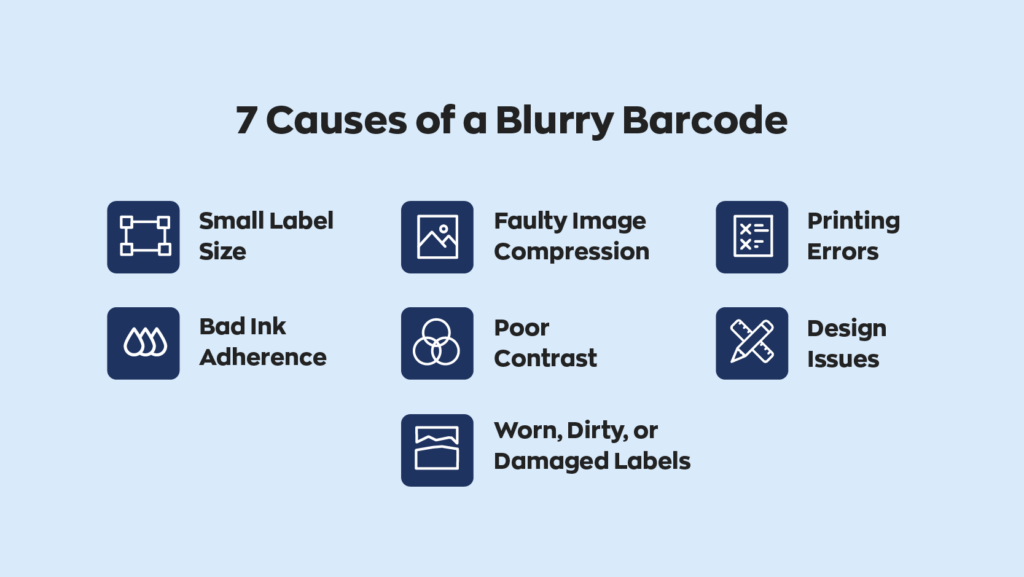
For today’s article, we’re going to help you get the most out of your barcodes. We’ll cover common causes for blurred barcodes, how to resolve those causes, and some best practices to avoid them in the future. We’ll also touch on QR codes; how they differ, how they’re similar, and how a blurry QR code might vary from a traditional 1D barcode.
Why is it important to avoid a blurry barcode?
A single blurry barcode probably won’t cause any real problems. However, something caused that blurry barcode, and if you don’t resolve the issue, you’re bound to encounter more. A blurred barcode will stop you in your tracks, wasting valuable time, which is the antithesis of what barcodes are intended for.
A full-fledged barcode system aims to improve four main business areas: efficiency, error reduction, data collection, and tracking. To do this, each element of the system must be fully functional. Even the best barcode scanner on the market won’t be able to scan a blurry barcode.
The basics of how to use barcodes
Barcodes look like black-and-white stripes to us, but to a computer with the correct database, they’re full of information. Generally speaking, every barcode system has three parts: hardware, software, and barcode labels.
Hardware typically refers to a barcode scanner and barcode printers. Software usually refers to the program that reads barcodes and matches it to something in its database. Barcode labels, of course, refer to the barcode itself. Do note that barcodes come in many different shapes and sizes. While they fall into various subcategories, a traditional 1D barcode and a QR code are both barcodes and serve similar purposes.
Similarly, there are three basic steps to using barcodes: designing, printing, and scanning. If you’re just starting out, there’s two main ways to obtain barcodes. You can create business-exclusive ones with an online generator or a barcode font. You can also make them with barcode software like inFlow. If you need barcodes that are not for your business alone, you can purchase them from our Official GTIN Barcode Shop. You can buy up to ten barcodes for only $30 each with no renewal fee. However, if you need more than ten barcodes, you’re better off getting a company prefix directly through GS1.
Once you’ve got your barcode(s) and linked them to the relevant product(s), all you have to do is print them out. Then, place them on your product and use a barcode scanner to read them.
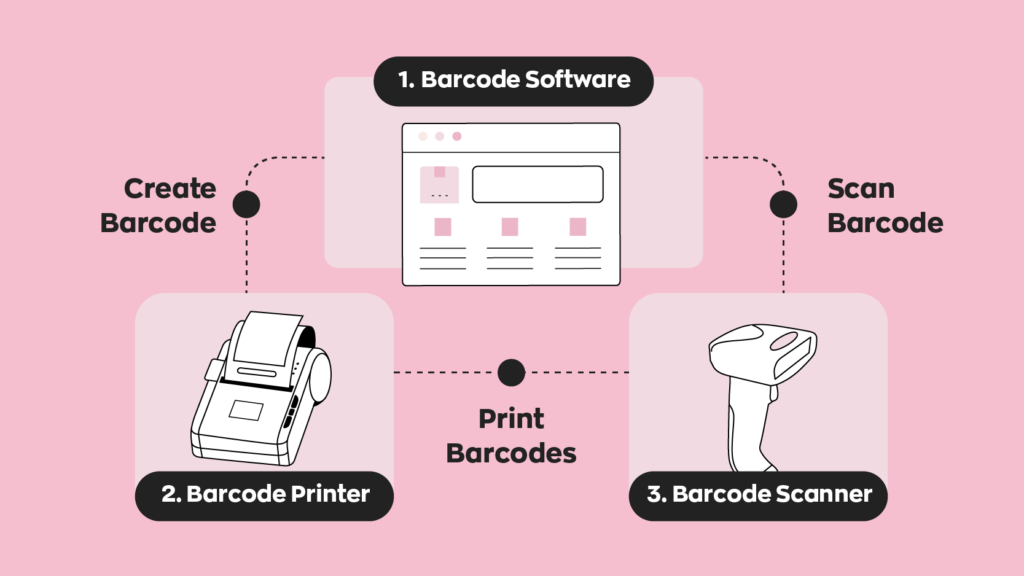
Keep in mind that this is just an extremely basic overview. For a more in-depth read, we recommend checking out our ultimate barcoding guide. It covers everything there is to know about barcodes.
Common causes of blurry barcodes
A barcode is a rather unique tool. It’s a mainly digital system that relies on some analog elements to function. That opens it up to a myriad of problems. And a blurry barcode or a blurry QR code isn’t the only reason for a read error, either. There could be other factors preventing the barcode scanner from reading it correctly. Here are some of the most common causes of blurred barcodes:
Insufficient size
Barcodes work in very small units of measurement. Modern handheld scanners are pretty good at adjusting for size and orientation, but sometimes, barcodes are just too small. A scanner reads a barcode by measuring the thickness of the black lines and the space between them. Therefore, the smaller they get, the more likely the lines will bleed into one another.
Faulty printers
If you find one blurred barcode, you can probably pass it off as a one-off. If you find a whole batch at once, though, it probably comes from the same source. In this case, the printer. It could have a bad ink cartridge, poor placement, or just be flat-out broken. Whatever the case, until you fix it, it’ll keep producing blurry barcodes.
Out-of-focus cameras or faulty scanners
Because reading requires an accurate image, the camera must be able to focus properly. This isn’t a problem for most scanners, but it’s becoming increasingly common to use cell phones as scanners. While it’s usually fine, some models may simply be inept as scanners. There is also the possibility that the scanner you’re using is faulty. To test your scanner, try printing out barcode labels with a larger-size barcode and see if it still causes problems. If so, chances are the culprit is your device, not a blurry barcode.
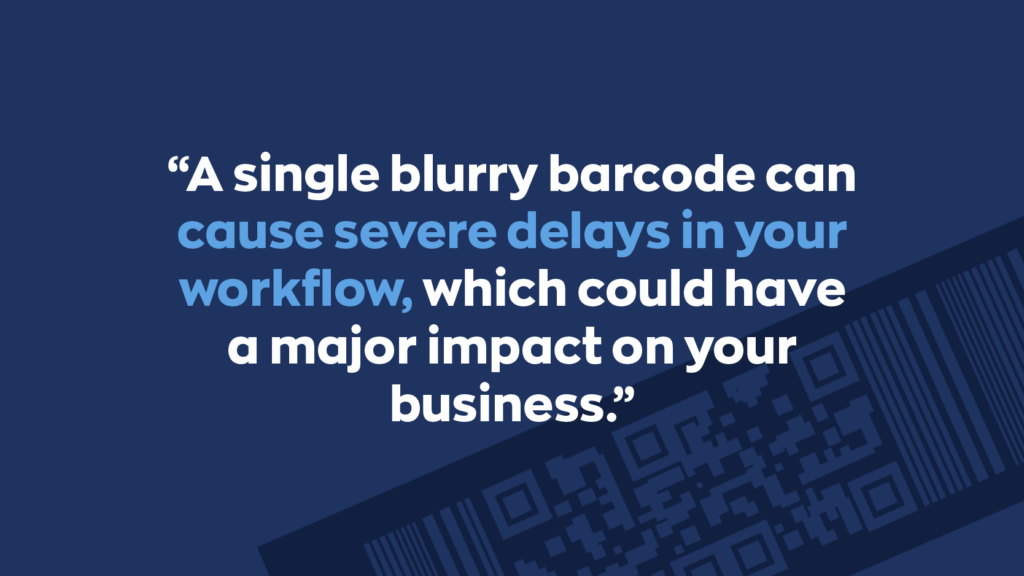
Environment
While not really part of the barcode system, environmental factors also play a role in readability. Poor lighting conditions can lead to a lack of contrast, which is really important when dealing with black and white. Other factors, such as excessive humidity, could cause ink to spread or smudge. Moving warehouses would be overkill, but making rearrangements could fix things. Though it’s never really first on the list, it’s often worth checking.
Can you avoid a blurred barcode?
Of course, you can try to avoid the blurry barcode dilemma altogether. Sometimes, prevention is best. To be clear, though, you’ll still get the occasional error. Nothing is perfect, after all. You can minimize the number of errors and their effect, though. Here are some steps you should consider taking to avoid blurred barcodes and misreads.
Use appropriate gear
We mentioned above that some smartphone cameras just won’t cut it as scanners, and that’s true. The same logic applies to other areas of the system. It might be tempting to use a standard printer, but specialized printers exist for a reason. The chances an inkjet printer will produce blurry barcodes are much higher than if you purchase a barcode label printer.
This also extends to the barcodes themselves. Though they look similar, there’s a few different types. Some are easier to read than others. For example, a QR code holds more data than a standard barcode, and unlike standard barcodes, you can scan it from any direction. A blurry QR code is also more likely to scan successfully than a 1D barcode.
Avoid blurry barcodes with thoughtful label design
How you design your barcode labels will play a massive role in whether or not you end up with a blurry barcode. Generally, this will depend on the size of the barcode on the label. As we mentioned above, you’re more likely to end up with a blurry barcode the smaller they are. InFlow users can use our built-in label designer, which will help them choose appropriate dimensions. Our label designer gives you the flexibility to design your barcode labels however you like. You can even add images, logos, and more.
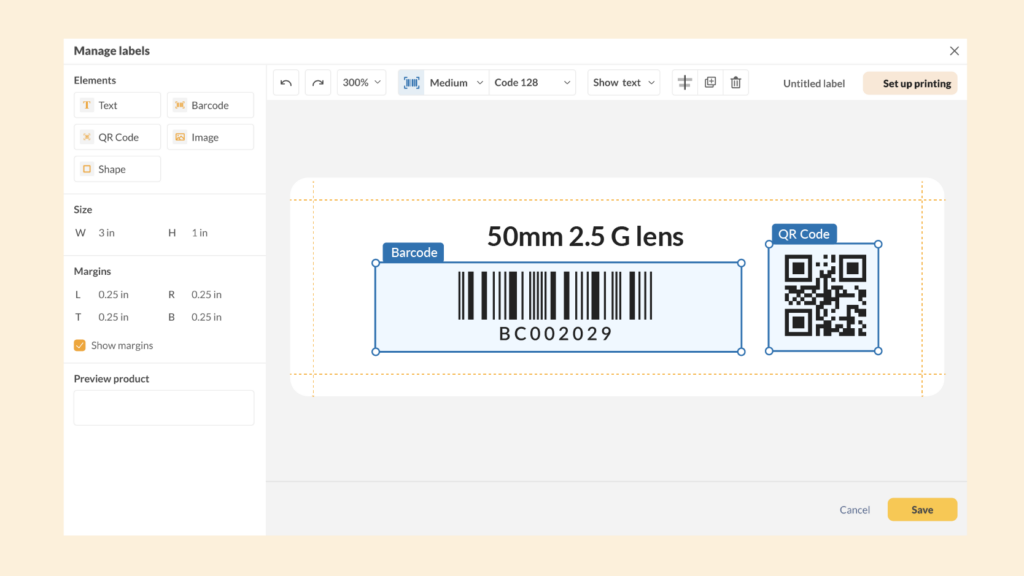
Place barcodes smartly
It might take some thought, but be sure to place your barcodes in a location that makes sense. Ideally, it should be accessible, relatively safe from damage, and easily illuminated. Placing them in an awkward location could make them difficult or even impossible to read with a scanner, regardless of whether you’re dealing with a blurred barcode or not.
Perform regular maintenance
A barcode system is a tool, and tools need maintenance. That can mean a few different things, such as checking printers and scanners regularly, updating software regularly, and so on. Ensuring barcodes are clear and intact on individual units is painstaking but also necessary.
Wrapping up
While barcodes are an excellent tool for any business, retail or otherwise, they’re still prone to occasional failure. A blurry barcode might not seem urgent, but that small failure can cascade into something that affects the whole business. It’s best to address them quickly and take steps to prevent issues beforehand.


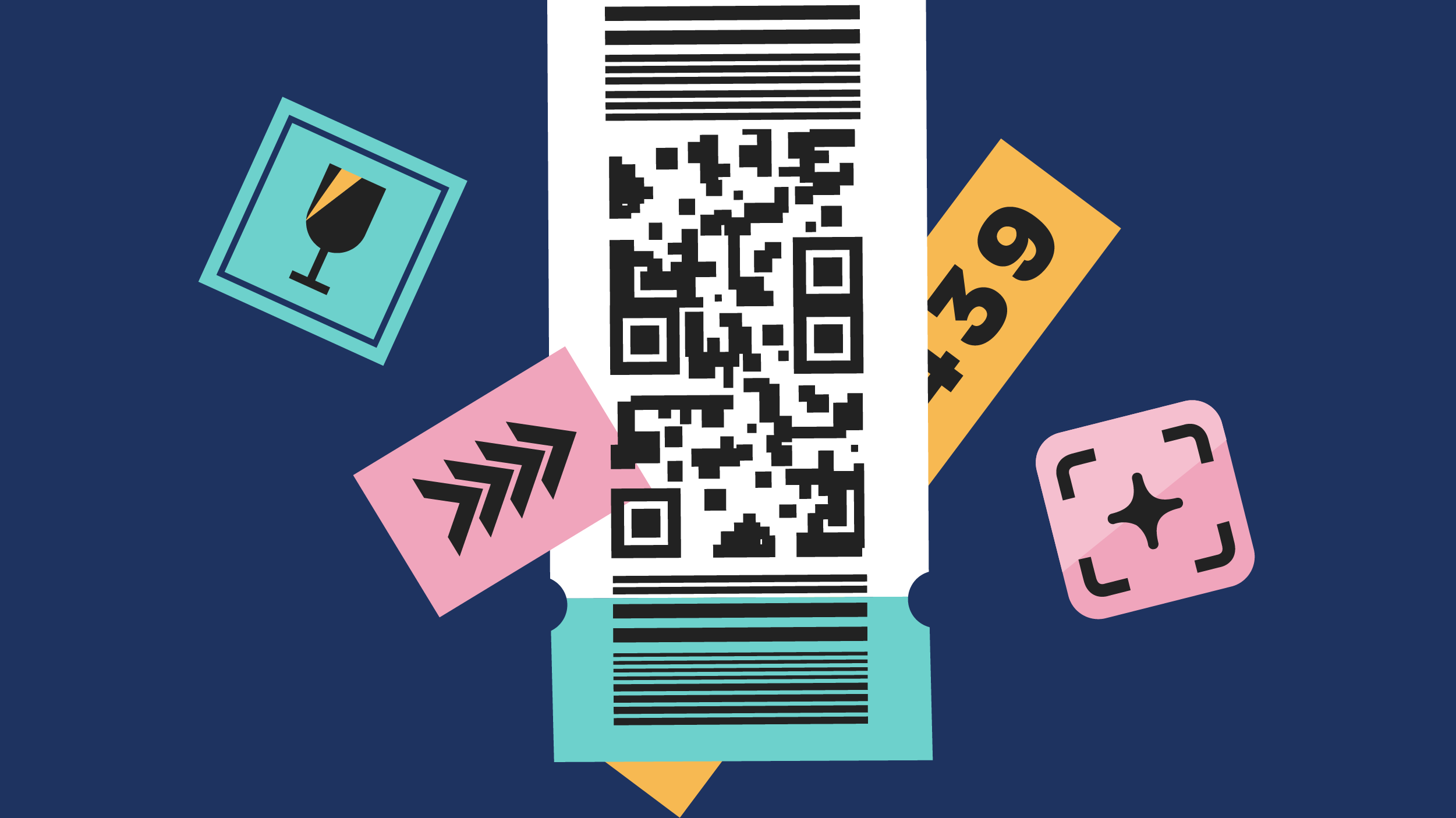
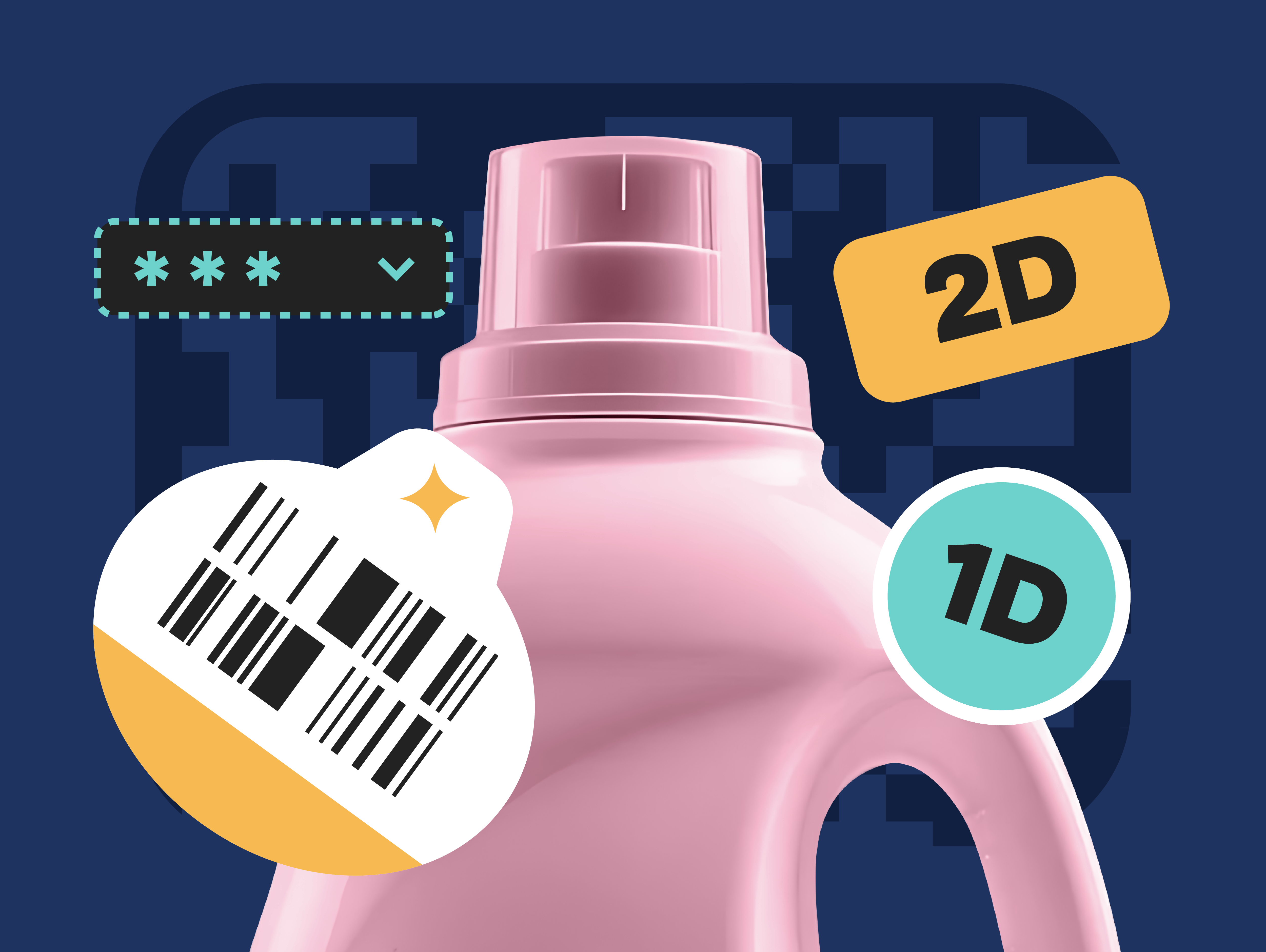
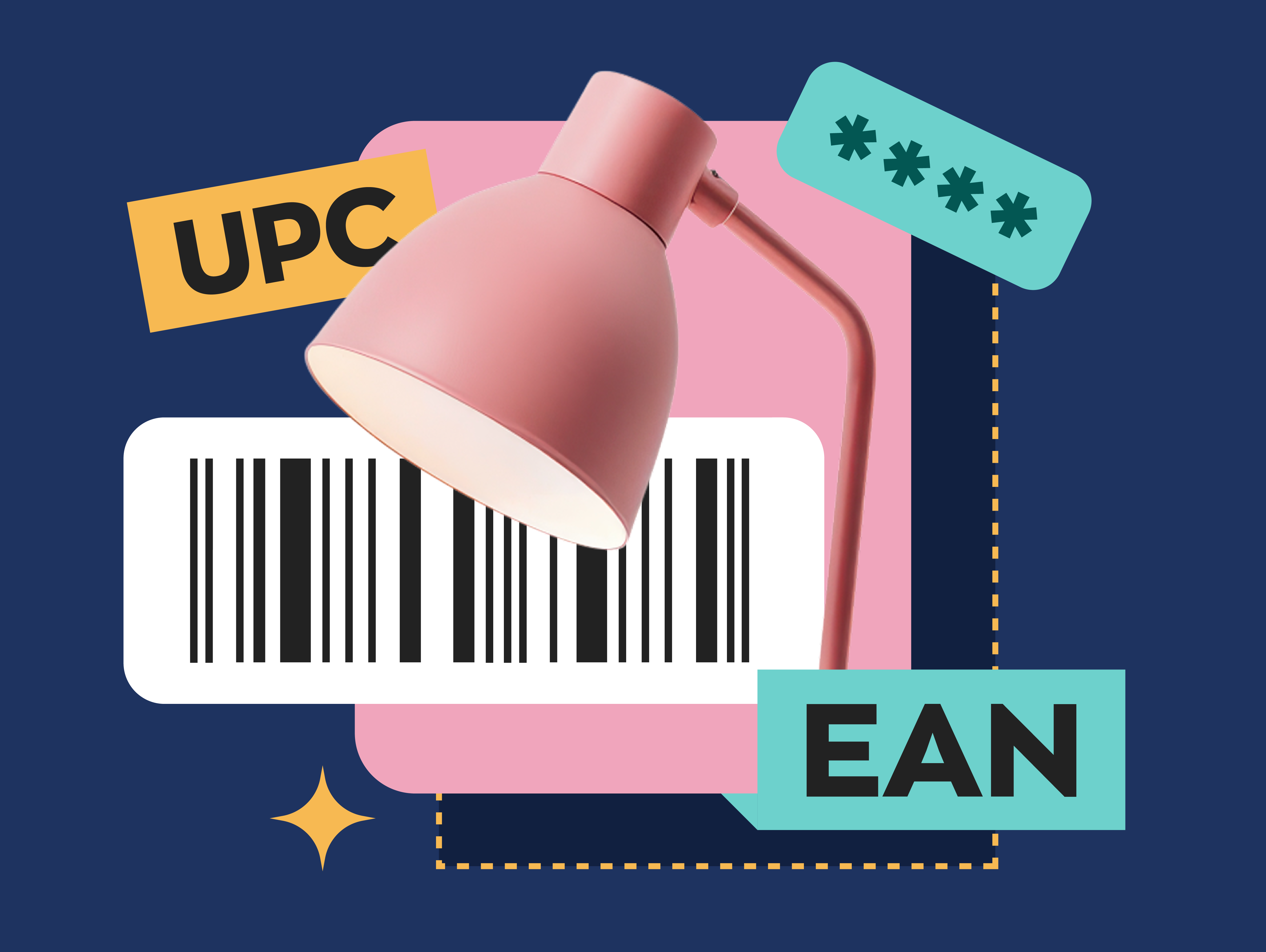
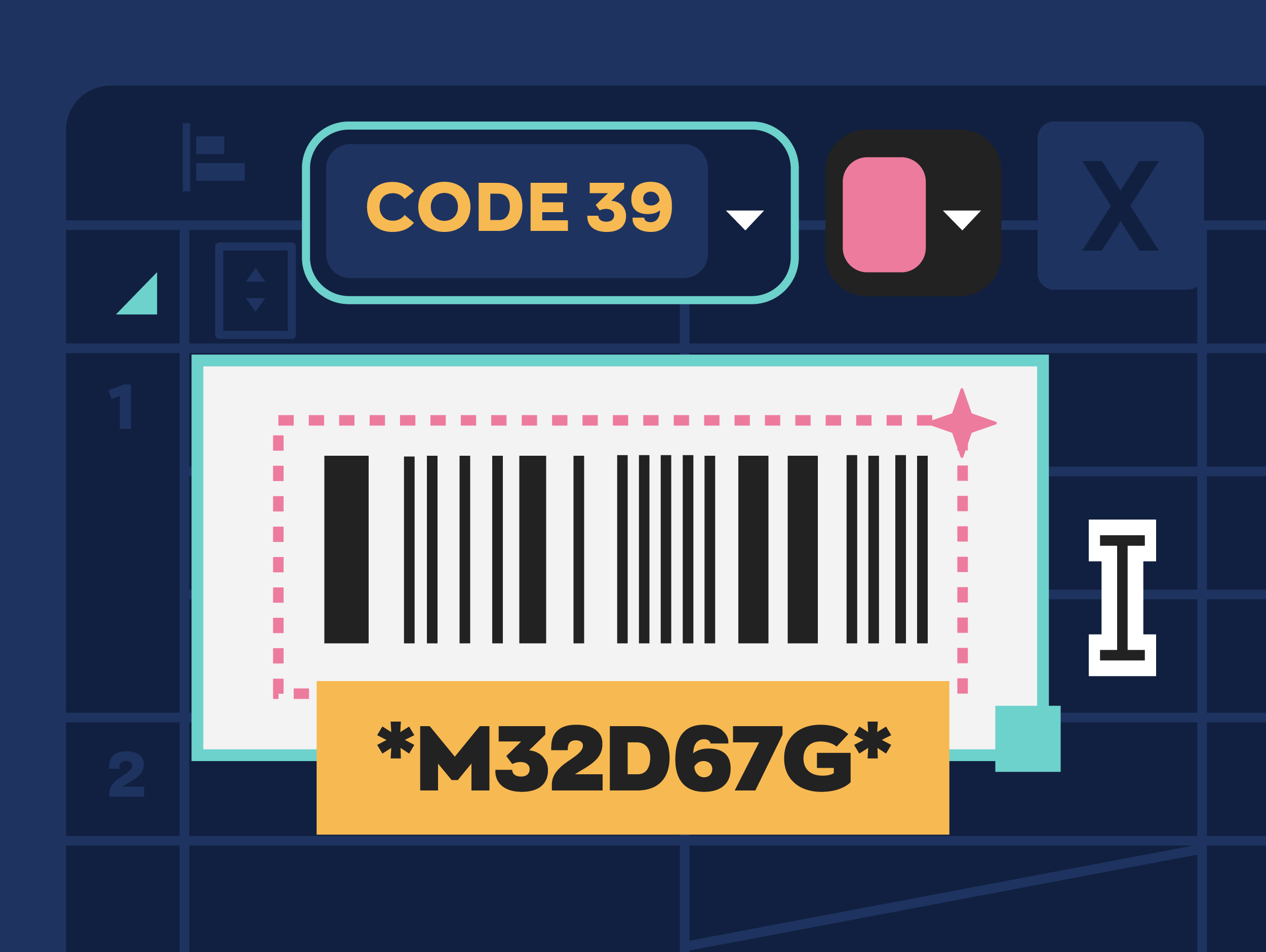
0 Comments